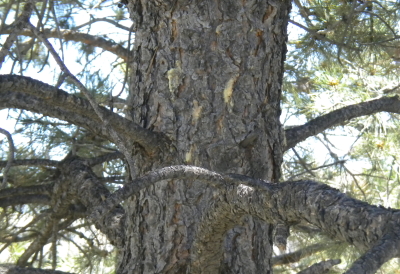A healthy tree is a happy tree and happy pine and spruce trees are at a reduced risk of ips beetle infestation.
Related to the bark beetle, ips beetles are slightly lazy members of the family. They typically choose the path of least resistance: stressed and weakened trees or freshly chopped wood. So it’s possible to avoid ips beetle infestations through preventive management.
Good outdoor housekeeping can keep existing ips beetles away from healthy trees. Moist wood is a preferred habitat of tree pests. Always store cut wood away from trees and pile loosely to allow it to dry. Likewise, spread out tree debris like fallen branches and brush to dry away from 
Location is important for any newly transplanted tree and pine and spruce are no exception. Trees need room to spread out – both above and below ground. Adequate watering (not too much or too little) ensures that nutrients from the soil are optimally distributed throughout the tree. Too much water can also erode soil from the base of the tree, exposing roots, increasing the risk of mechanical damage from mowers or string trimmers.
Wounded areas of trees – roots, trunk or branches – can set off a chain reaction that leaves them open to infestation. A tree wound is like an open cut on human skin. Bacteria can find its way into the tree system through the wound. A diseased tree is weak and stressed and becomes a prime location for an ips beetle to lay eggs or overwinter.
Chemical treatment is also a preventive measure when it comes to ips beetles. Timing is important because females lay eggs up to four times per season. SprayTech recommends preventative spraying two times a year.
If you suspect ips beetle infestations on your pine or spruce trees, contact SprayTech, Colorado tree health care specialists, at 720-248-0000 to discuss treatment options.
Comments are closed.